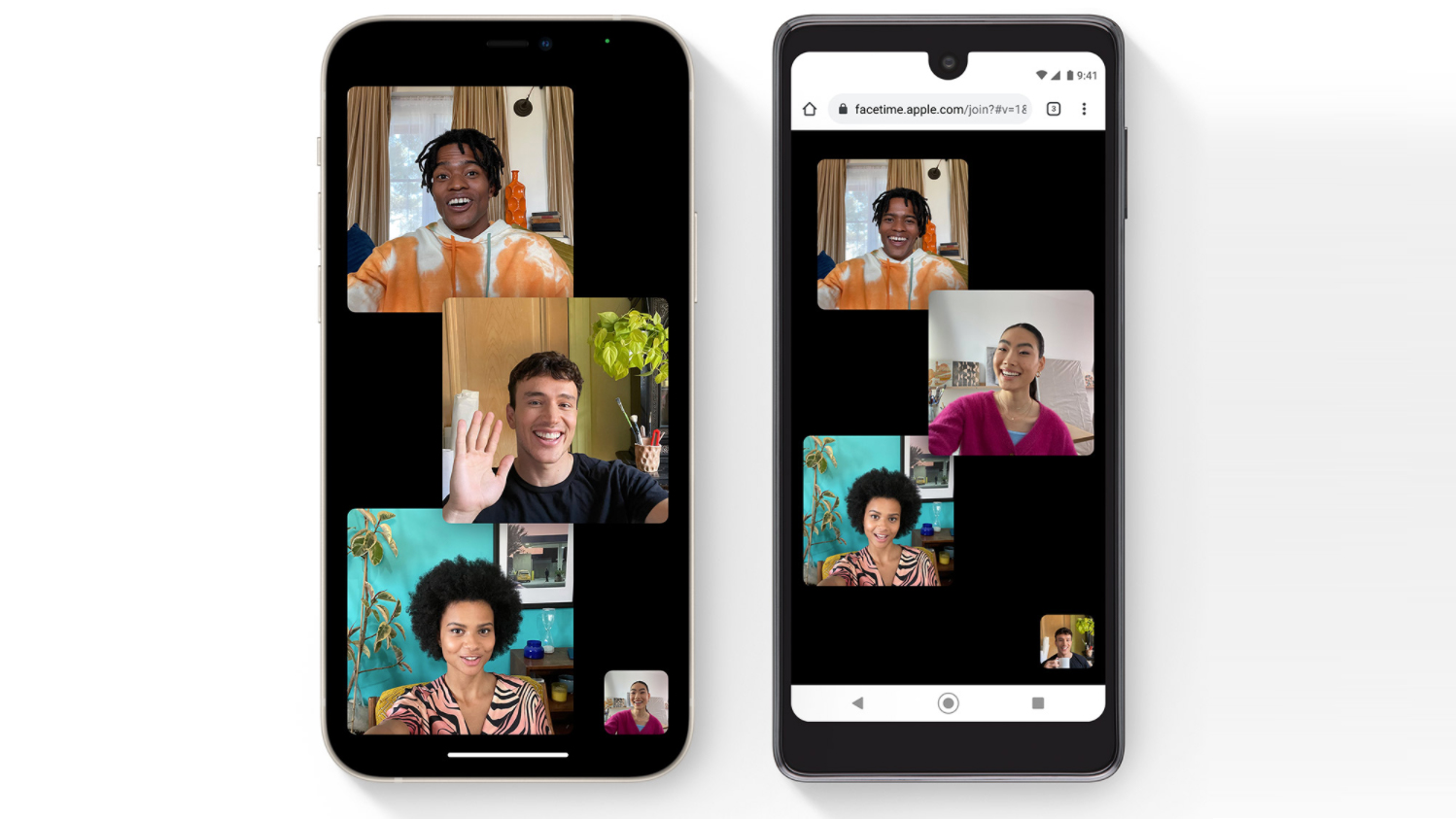FaceTime is coming to Android and Windows, but these are the limitations
Apple's video calling service now works on the web, but you won't get access to all its features – here's what's missing


As part of its announcement of iOS 15 (coming later in the year, and likely arrive alongside iPhone 13), Apple has revealed big changes coming to its FaceTime video calling service. There are lots of cool changes for iPhone, iPad and Mac users, but the most significant moment was saved for last: Android and Windows users can finally join FaceTime calls via a web browser!
However, users joining a call via the web won't have all the same capabilities as someone using the app – including not being able to share their screen or even see the shared screens of others – which means FaceTime won't be eating Zoom's lunch just yet.
When FaceTime was first announced, Apple declared its intention to make the technology open source, which could mean it had the potential reach other platforms outside of Apple's, but that never materialised. FaceTime – much like iMessage – has remained an Apple-only affair.
But with iOS 15, iPadOS 15 and macOS Monterey, you'll now be able to create FaceTime links. These can be shared with other people through… well, whatever way you like to share links. Email, text, attach to a calendar event – whatever you like.
If someone is on an Apple device, it'll push them to the FaceTime app for the call. For everyone else, the call can be opened in the latest version of Google Chrome or Microsoft Edge.
When you're in a FaceTime call on the web browser, you'll be able to connect with audio and video, and you'll have lots of control over the call – you can switch between different cameras, mute, turn off your camera, and choose different views.
However, there's no way to create a FaceTime call if you don't have an Apple device, though if someone with an Apple device leaves a call and only Android/Windows users are left, the call will continue until everyone quits.
Get all the latest news, reviews, deals and buying guides on gorgeous tech, home and active products from the T3 experts
Perhaps most crucially of all, while people using the FaceTime app can share their screen and see the shared screen of others, those on the web will not be able to do either of those two things. Not being able to even see the shared screen seems like a really big omission.
Android/Windows users will be able to see the results of stuff like camera effects or the new Portrait blurring option, but won't be able to approve users to join a call or kick people from it, and won't be able to participate in Apple's new SharePlay watching and listening together feature.
Finally, if you're in the app, sign language users are highlighted when they're signing in the app version of FaceTime so that they're immediately visible, but that won't work if they're on the web (best to stick to the grid view in that case).
Despite the limitations, it's really great that a lone Android user in a family is no longer left out of FaceTime calls. And Apple says that all FaceTime calls remain end-to-end encrypted when using the web version, so for the privacy conscious, it's a really good extra option to have.

Matt is T3's former AV and Smart Home Editor (UK), master of all things audiovisual, overseeing our TV, speakers and headphones coverage. He also covered smart home products and large appliances, as well as our toys and games articles. He's can explain both what Dolby Vision IQ is and why the Lego you're building doesn't fit together the way the instructions say, so is truly invaluable. Matt has worked for tech publications for over 10 years, in print and online, including running T3's print magazine and launching its most recent redesign. He's also contributed to a huge number of tech and gaming titles over the years. Say hello if you see him roaming the halls at CES, IFA or Toy Fair. Matt now works for our sister title TechRadar.